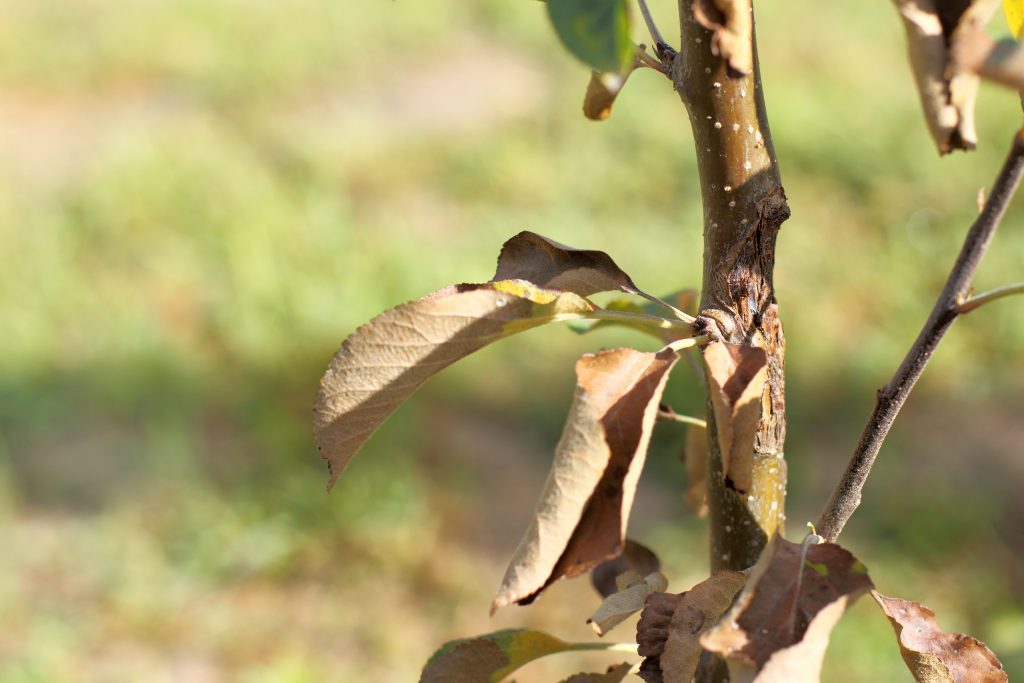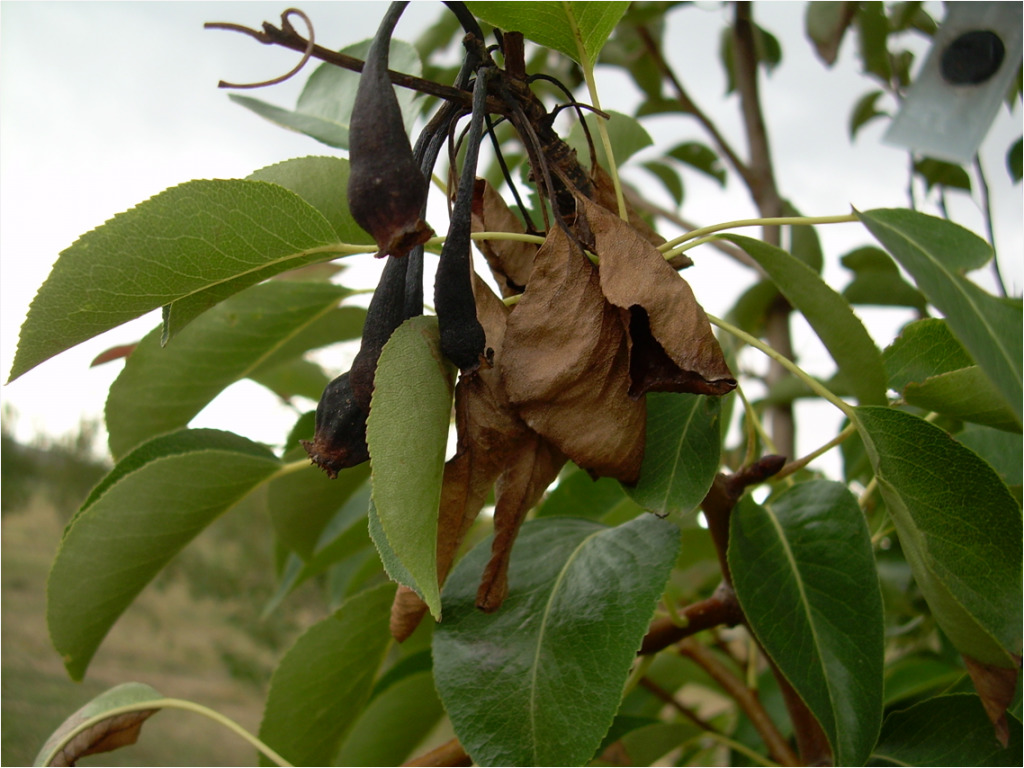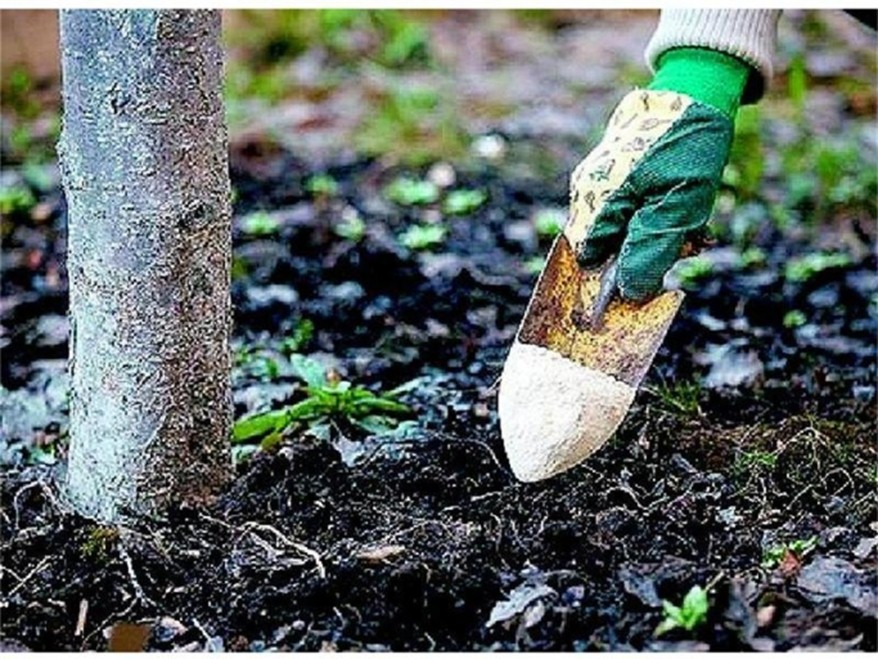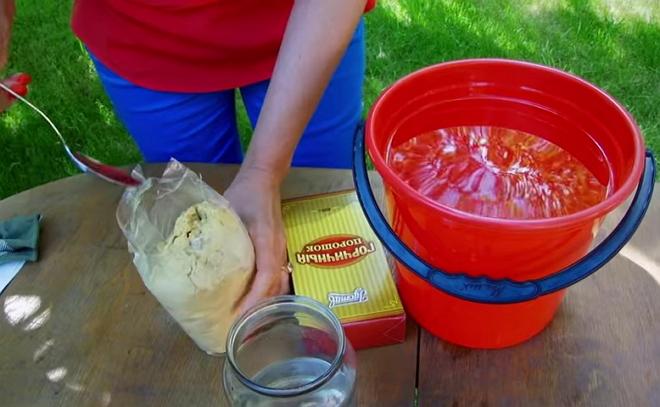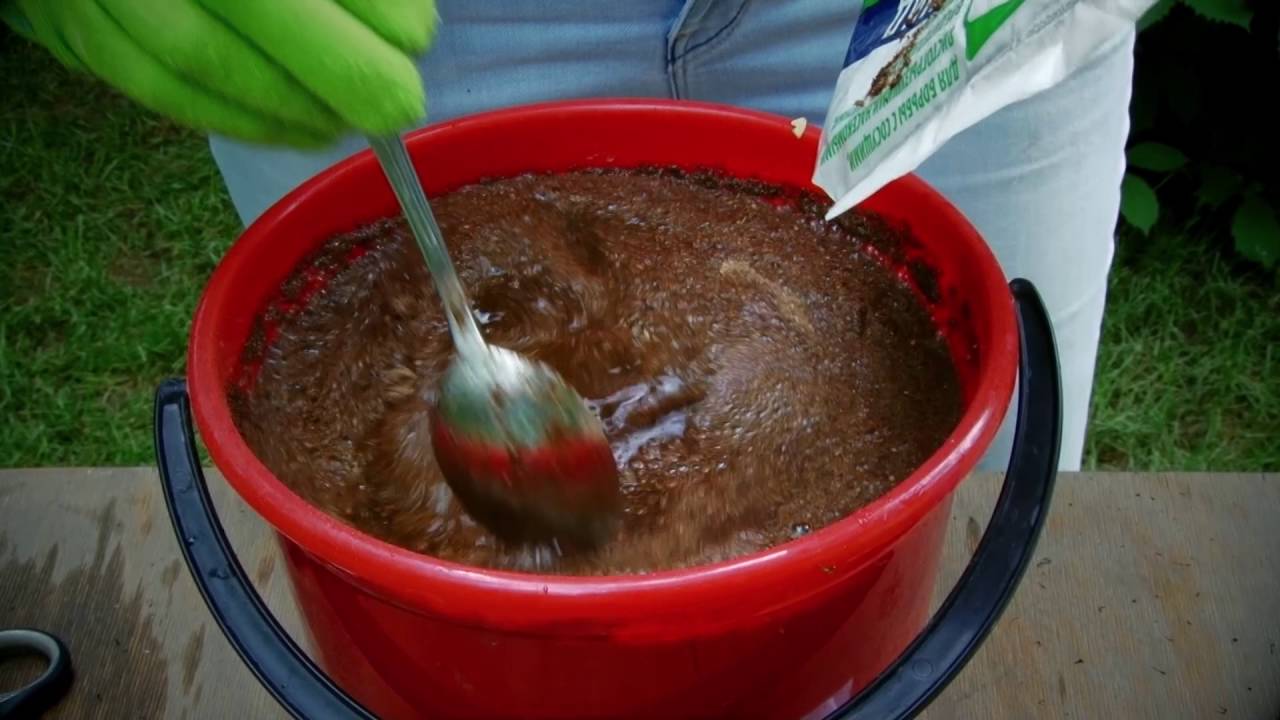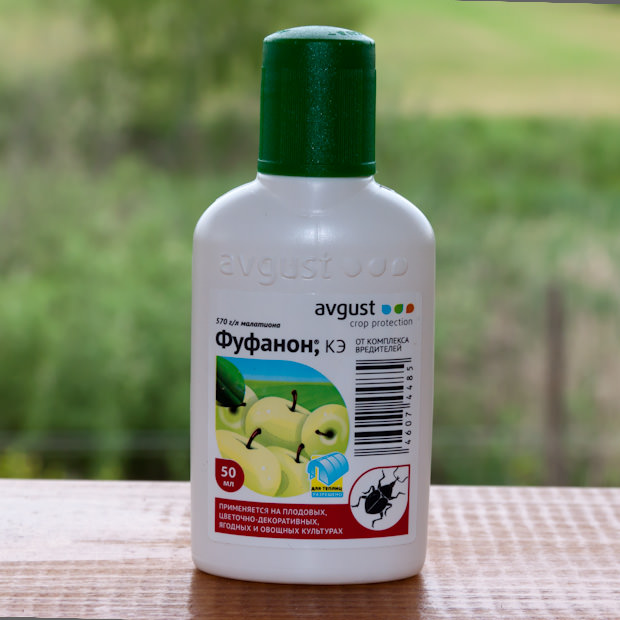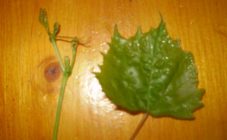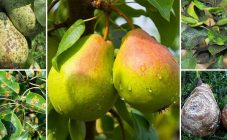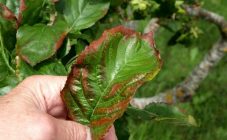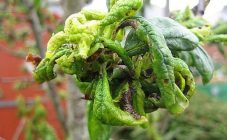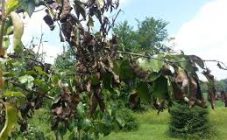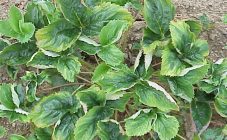Content:
Until recently, pear trees could only be grown in the southern regions of Russia. However, today this fruit crop is often planted even in the northern regions of our country. In addition, the pear can be a wonderful ornamental plant in any garden.
When caring for a garden pear, certain difficulties may arise, primarily in the form of susceptibility to certain diseases, which is due to the southern origin of this culture. Often leaves are affected by infections, due to which they begin to curl and fall off. Many gardeners are interested in the question of why pear leaves curl into a tube, and how to get rid of it.
Causes of leaf curling
The leaves on a pear tree can begin to curl due to the influence of a number of negative external factors:
- Aphids living on a pear can lead to this problem. The symptoms of the presence of this insect, in addition to the fact that the leaves of the pear are curled, includes the rapid fall of the ovaries and buds, as well as the fact that the tube from the leaf and green shoots acquire a brown bloom;
- A pear moth that has settled on a tree can also harm the pear. The moth is a small moth that uses plants to lay eggs on an infected leaflet, which later hatch into small caterpillars that damage the leaves. Thus, the appearance of the moth also leads to a stop in the growth of the tree and the curling of the leaves, which can turn black, they can roll, and they fall off;
- Settled on a pear planting pear honeydew. It is a small-sized parasitic insect that feeds on the sap of a pear tree. The harm from the pear honeydew also consists in the release of a special liquid by it, which affects the branch. Because of this liquid, leaves begin to curl. In addition, each leaf becomes sticky before curling up;
- The emergence of such a dangerous pest for pears as a leafworm - a small-sized caterpillar that folds leaves on a pear tree, which does not allow them to receive useful trace elements in the future, as well as laying eggs on a plant;
- Deformation of leaves by a gall mite - a small parasitic insect, the habitat of which is the buds of plants. With the onset of warm weather, the gall mite moves to young leaves, which is why they are deprived of useful juices. The accompanying symptoms are the appearance of small dark spots and the subsequent rolling of the leaves;
- Leaf damage due to scab - a type of fungal disease that can lead to the loss of the entire pear crop in a short time. Warm, humid weather is considered a favorable condition for the appearance of scab. Symptoms of the disease include redness of the foliage, after which the pear leaves turn black and curl into a tube. All this is accompanied by a significant deformation of the fruit, a sudden stop in their development and the fact that the leaves curl on the pear and apple tree, including;
- Infection of the pear tree with a bacterial infection, which also accompanies blackening and curling of the leaves. The conditions for the spread of bacterial infection are considered to be warm, rainy weather;
- The defeat of the pear with powdery mildew, which first of all damages the young foliage, which is expressed in the appearance of a white bloom and further twisting;
- Disease of a tree with a milky shine, which appears in a warm arid climate, sharp temperature fluctuations and an excess of ultraviolet radiation;
- Viral mosaic disease, leading to the fact that the leaves begin to bend, consisting in the formation of small light green or light yellow spots on them, which rapidly increase in size, and the death of the planting itself;
- The onset of chlorosis, due to which the leaves turn yellowish and begin to curl. First of all, with chlorosis, the top of the plant begins to turn yellow, curl and wither;
- Irregular watering is another reason that the leaves can wrap up, they will begin to darken, the plant will die;
- Refusal of timely application of fertilizers, which contain useful trace elements necessary for the normal development and fruiting of a pear.
Methods for treating leaf curl
Despite the fact that there are many different methods on how to get rid of the leaves twisting on the pear, what to do, experienced gardeners prefer folk remedies.
Herbal celandine tincture
This folk method is considered the most highly effective in the fight against aphids, due to which the leaves begin to roll. Making an infusion from celandine consists in infusing for five days a solution consisting of five branches of crushed celandine, which must be poured into a bucket of hot water.
Wormwood tincture
According to the recommendations of many gardeners, wormwood tincture can be used to exterminate all varieties of parasitic insects on the pear tree. To make the essence, dry wormwood in the amount of one kilogram is poured into a five-liter container with clean water.
The infusion time of wormwood tincture is two days. After that, the broth must be boiled for half an hour and wait for the final cooling. Then the liquid is filtered, and another 10 liters of water are added to it. Spraying trees with wormwood tincture should be carried out twice within ten days.
True tomato tops
To make this folk remedy, four kilograms of fresh tops are crushed, which can be replaced with two kilograms of dried leaves. Next, the tops are poured with 10 liters of water and infused for half an hour.
Mustard solution
To make a mixture for processing, 80 grams of mustard powder must be poured into a container with water and mixed well. The pear should be treated with a mustard solution four times when the plant is in the budding phase.
Potassium permanganate solution
Making an infusion of potassium permanganate consists in diluting 5 grams of this substance in 10 liters of water. Spraying with diluted potassium permanganate is carried out three times a day, when the tree begins to bloom, fades and bears fruit.
Dandelion decoction
This tool is most effective in the destruction of aphids.To make the broth, a pound of dandelion stalks is placed in a container with a liter of water and left for a day to infuse.
After that, the solution is boiled for 15 minutes on the stove. During cooking, add chopped garlic in the amount of two heads to the tincture. After that, the solution is cooked for another 5 minutes, after which it is filtered and filled with 10 liters of water, the temperature of which is slightly above room temperature. You can add 35 grams of liquid soap to the solution.
Spraying pear dandelion solution is carried out once every week.
Potato tincture
Potato infusion is considered the most highly effective against aphids. To make this folk remedy, potato tops are poured with 10 liters of water and infused for one day. After that, the essence should be filtered and 35 grams of laundry soap should be added to it.
Infusion of tobacco dust
400 grams of tobacco dust is poured with 10 liters of water and infused for two days. Next, the liquid is filtered, after which 100 grams of laundry soap is added to it. According to experienced gardeners, tobacco dust can be successfully replaced with ordinary ash.
Onion peel decoction
This remedy is recommended for treating the pear tree from aphids, which can curl the leaves. To make it, 200 grams of onions with husks are finely chopped and placed in a bucket filled with water. The mixture is infused for one day.
Pear spray chemicals
The list of chemicals most commonly used by gardeners in order to to treat pear trees by spraying, the following names are included:
- Fufanon - which for the manufacture of a solution is needed in the amount of 75 grams, diluted in a 10-liter volume of water;
- Aktara is a remedy contraindicated for use during the flowering stage, as well as posing a danger to human health. To make the composition, 8 grams of powder is diluted in a 10-liter volume of pure water;
- Aktelik is a drug not recommended for use during flowering and acting 4 days after planting it. To make the essence, 2 milliliters are dissolved in two liters of water;
- Strobi is a remedy used to combat powdery mildew and late blight. Dissolve the capsule in water and spray the pear three times;
- Bordeaux liquid is copper sulfate, 100 milliliters of which dissolves in 10 liters of water. A sick pear is sprayed in order to prevent the leaves from curling, every three days at five-day intervals;
- Ofloxacin is a super-powerful drug, two tablets of which must be dissolved in a bucket of water and sprinkled with a pear;
- Horus is a product recommended for use in low temperature environments. To make the essence, water-soluble granules in an amount of 2 grams are dissolved in a 10-liter volume of water. Spraying is carried out shortly before the pear harvest begins.
Preventive measures for leaf curling
Preventive measures aimed at preventing diseases leading to the curling of pear leaves should be carried out in a timely manner. These activities include regularly pruning the pear tree. You also need to water the pear often, avoiding waterlogging of the soil.
Also, in the fall, fallen leaves should be removed. An unripe young pear or ovary must be removed from the tree.
Another preventive measure is spraying the planting with Bordeaux liquid. It is recommended to process the trunk with ordinary lime.
As necessary, fertilizers enriched with useful microelements should be applied to the soil.The number of these activities increases if, after the late spring passes, a hot, rainy summer comes.
Curling of pear leaves and their blackening is a fairly common problem, especially when growing this crop in the northern regions of Russia. However, taking preventive measures and proper handling will help get rid of this problem.
